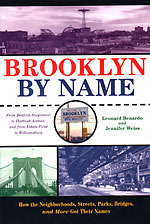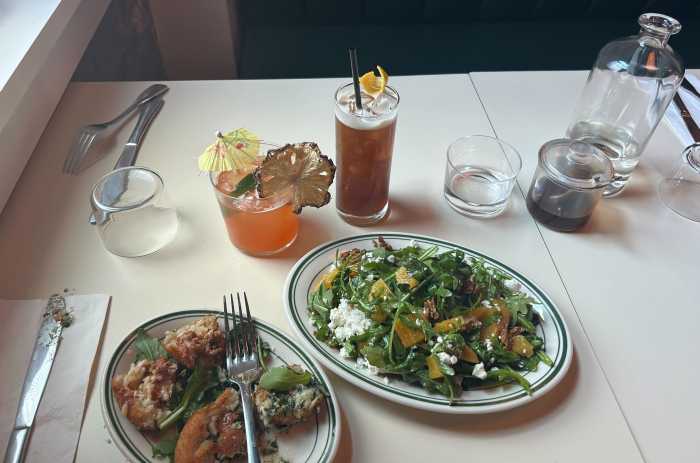Is the street
you live on named after a politician, the color of dirt, or a
family riddled with secrets and murder?
Brooklyn streets, parks and sites are dripping with history,
and husband-and-wife team Leonard Bernardo and Jennifer Weiss
have hung them all out to dry in their dictionary of street smarts,
"Brooklyn By Name."
"There are so many streets we come across so frequently,
but have no conception of their origin," said Bernardo.
"We spent time in all of the branch libraries throughout
Brooklyn," said Weiss, who lives in Park Slope with Bernardo.
"We read hundreds of books on Brooklyn, found street card
indexes, and poured through old Brooklyn College master theses
written in the 1960s about street name origins."
The book tells stories like that of Cropsey Avenue. The Bath
Beach street got its name from the landowning Cropsey clan, whose
family tree included a relative with a heavenly vocation (construction
supervisor for the New Utrecht Reformed Church) as well as a
murderer, who killed his wife in their Bath Beach home, only
to admit, "I did a rash act. I am sorry. I suppose I’ll
go to the electric chair."
A fun fact about the Verrazano-Narrows Bridge from "Brooklyn
By Name": it was almost called the Staten Island Bridge
when Islanders pouted that they were the only borough without
their own bridge.
Weiss recalled the nefarious act behind the renaming of a Park
Slope street.
"We uncovered an interesting murder case, which resulted
in the changing of DeGraw Street to Lincoln Place," she
said. Their book describes the 1873 murder of Charles Goodrich
who was shot by his lover, Lizzie Lloyd King, before he could
end their relationship.
"[Local 19th century residents] wanted to rid the street
of its murder association, so DeGraw Street above Fifth Avenue
is now Lincoln Place," summed up Weiss.
The authors claim that other street names continue to pay homage
to Brooklyn forebears with despicable associations.
"We were surprised to find the number of streets that were
named for slaveholders," said Weiss. "Early founding
families owned slaves, but that didn’t in any way prevent streets
from being named after them, as evil an institution as it was."
Examples include Ingraham Street in Bushwick and Flatlands’s
Hubbard Street.
"There are roughly 600 entries, but we don’t cover everything,"
said Bernardo. "As we say in the introduction, it would
take a lifetime to know Brooklyn. We left room for other excavators
to fill in the blanks."
"Brooklyn By Name" (NYU Press, $17.95) by Leonard
Bernardo and Jennifer Weiss is available at Barnes & Noble
[106 Court St. at State Street in Brooklyn Heights, (718) 246-4996
and 267 Seventh Ave. at Sixth Street in Park Slope, (718) 832-9066].
For more information, visit www.brooklynbyname.com.
– Jovana Rizzo
STREET SMARTS

























